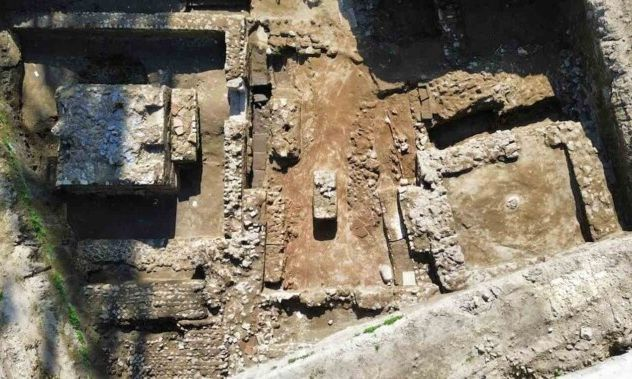Archaeologists in Mörigen, Switzerland, in the late 1800s found an arrowhead at a Bronze Age house. The 3,000-year-old relic has been a part of the Bern Historical Museum's collection ever since.
The arrowhead found in Switzerland was made using meteoritic iron. (Image credit: zvg/Thomas Schüpbach)
The arrowhead was made from a meteorite that came to Earth 3,500 years ago, according to a study that was recently revealed through new analysis, which was published in the September issue of the Journal of Archaeological Science.
According to lead author Beda Hofmann, head and curator of mineralogy and meteorites at the Natural History Museum of Bern, "on the outside it looks like a typical arrowhead coated in rust." "There is still a lot of metal preserved," he stated, citing their findings.
The study found that the palm-sized arrowhead not only contained aluminum-26 isotopes that don't naturally occur on Earth but also traces of iron and nickel alloy consistent with meteorites. This was demonstrated by a number of techniques, including X-ray tomography (computerized imaging) and gamma spectrometry (a process that detects gamma-emitting radioactive materials).
According to a release, the examination also uncovered tar remnants that were probably used to secure the point to the arrow's shaft and grind marks left behind from when the meteorite was fashioned into an arrowhead.
The artifact was initially believed to be connected to the nearby, less than 5 miles (8 kilometers) away, 170,000-year-old Twannberg meteorite site. The concentrations of nickel and germanium (a chemical element) in the arrowhead, however, weren't the same, according to subsequent investigation, the statement said.
"It wasn't from the meteorite that I suspected it was from," Hofmann said of the relic, which has a weight of one-tenth of an ounce (2.9 grams) and a length of slightly over 1 inch (3 centimeters).
Unfazed, Hofmann and associates consulted a geological database, which showed that the arrowhead originated from a 2-ton (1,800 kilograms) meteorite and that the Kaalijarv meteorite site in Estonia, more than 1,400 miles (2,250 km) away, contained similar metals to the artifact.
Scientists came to the conclusion that the arrowhead was probably traded at some point as a result of this.
Trade over great distances was already established during the Bronze Age, according to extensive documentation, Hofmann added. "These early people probably knew that the material was valuable and precious when the impact happened there in 1500 B.C."
According to the statement, meteoritic arrowheads are still extremely uncommon, with only 55 documented items discovered in Eurasia and Africa at 22 sites.
The arrowhead will be on display at the Bern Historical Museum from Feb. 1, 2024, to Apr. 25, 2025.







